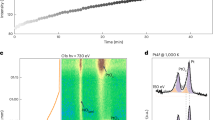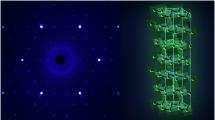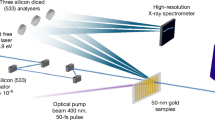Abstract
SINCE writing a note on this subject to NATURE (vol. xliii. p. 541) I have found that it is by no means requisite to use topaz in order to obtain crystals of platinum from a ribbon of that metal heated by a current. Thus the ribbon may be dusted over with quartz dust, and if the temperature be raised to that at which this is slowly melting (1430° C. about), crystals of platinum gather upon projecting points on the quartz. Doubtless the presence of fluorine will facilitate, as described in my former letter, the volatilization of the platinum, but there is little doubt that at a temperature some 300° below its melting-point (1750°; Violle) there is a slow volatilization of the metal due either to heat pure and simple, or to this in conjunction with the presence of a current as in high vacua.
This is a preview of subscription content, access via your institution
Access options
Subscribe to this journal
Receive 51 print issues and online access
$199.00 per year
only $3.90 per issue
Buy this article
- Purchase on SpringerLink
- Instant access to full article PDF
Prices may be subject to local taxes which are calculated during checkout
Similar content being viewed by others
Author information
Authors and Affiliations
Rights and permissions
About this article
Cite this article
JOLY, J. Crystals of Platinum. Nature 44, 124 (1891). https://doi.org/10.1038/044124b0
Issue date:
DOI: https://doi.org/10.1038/044124b0



